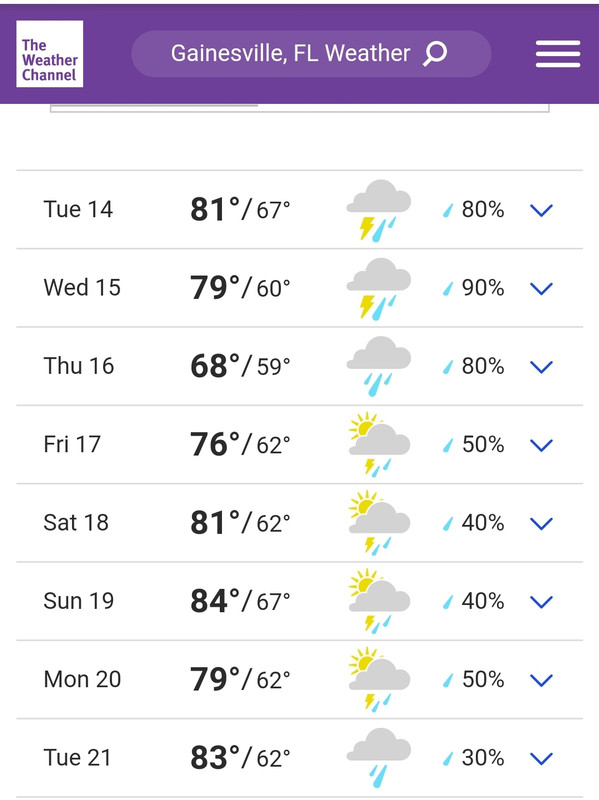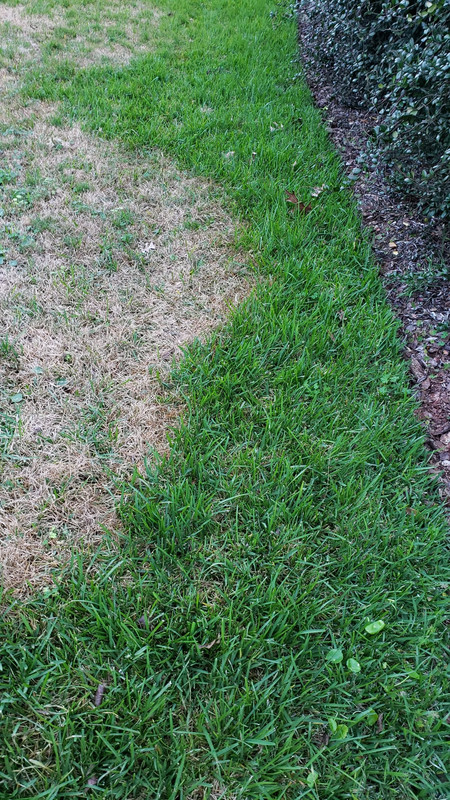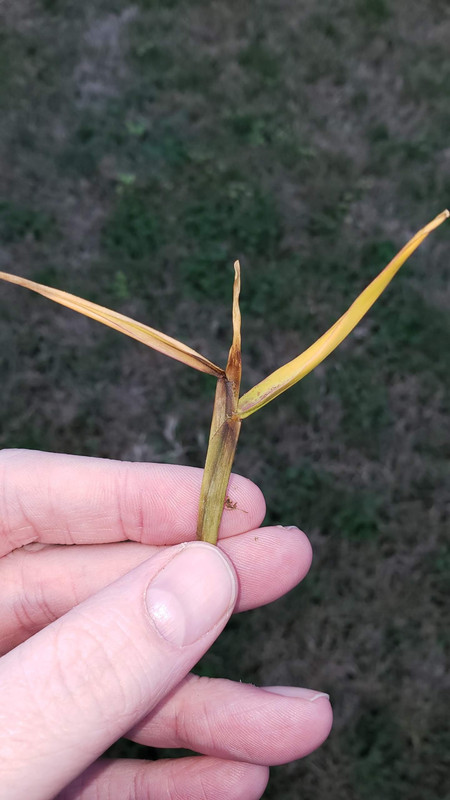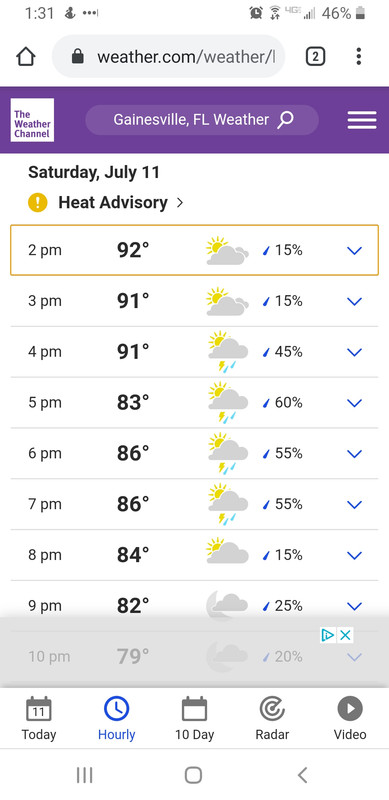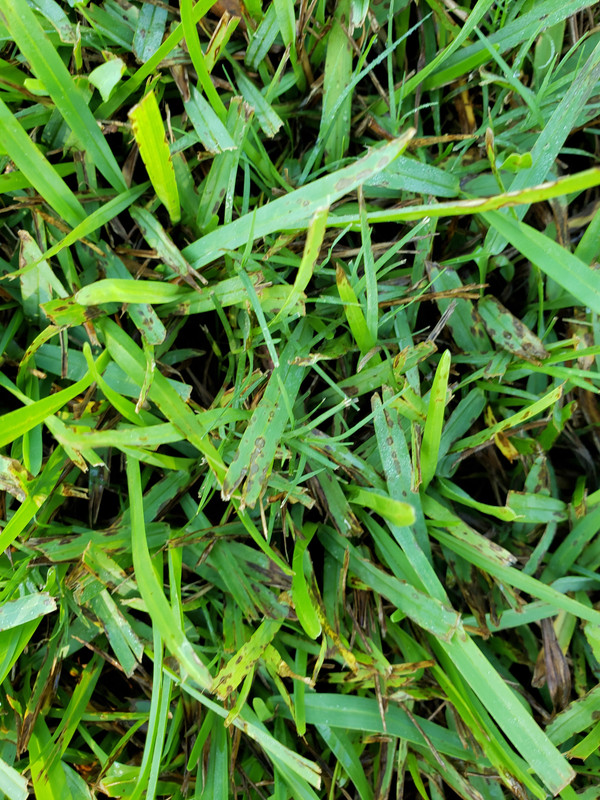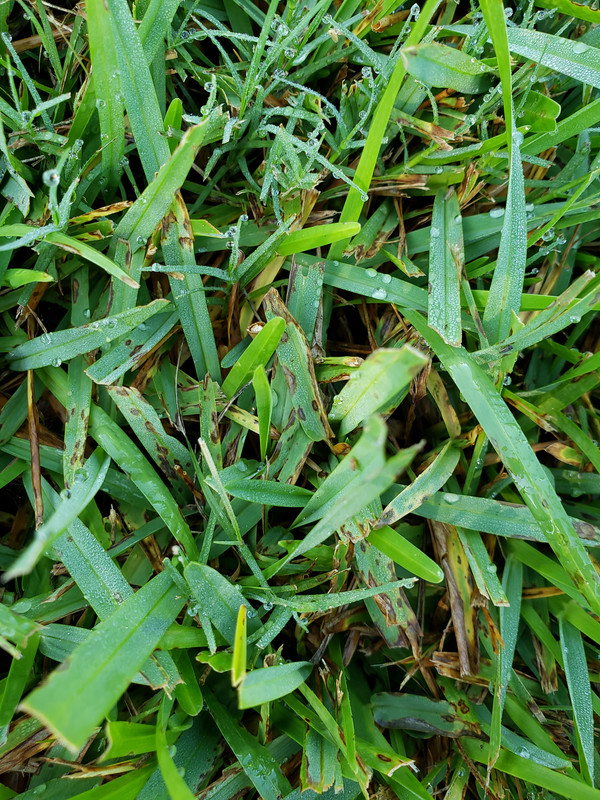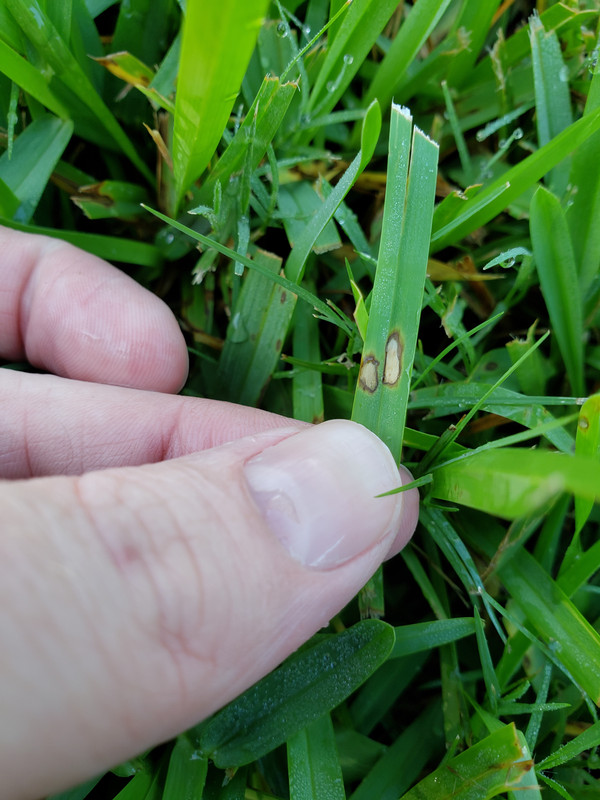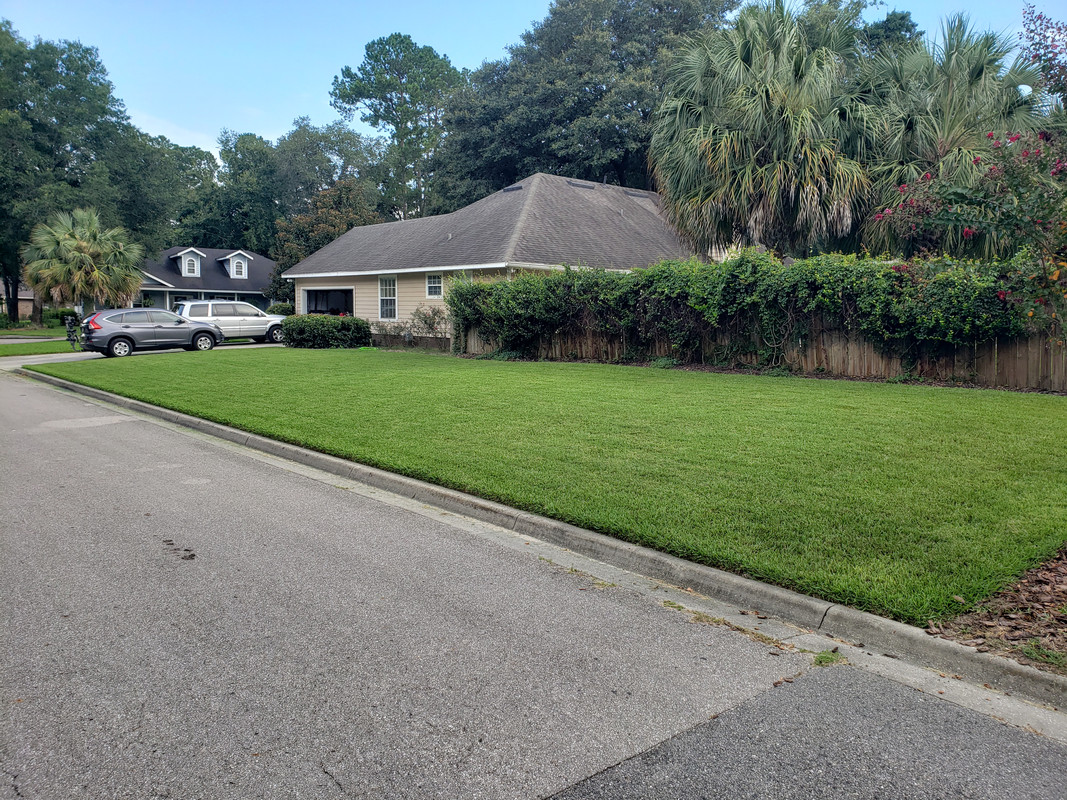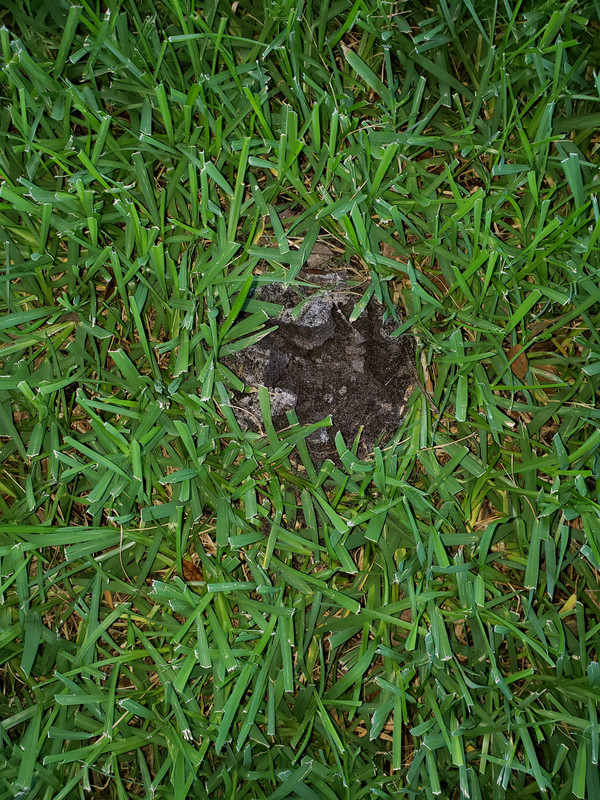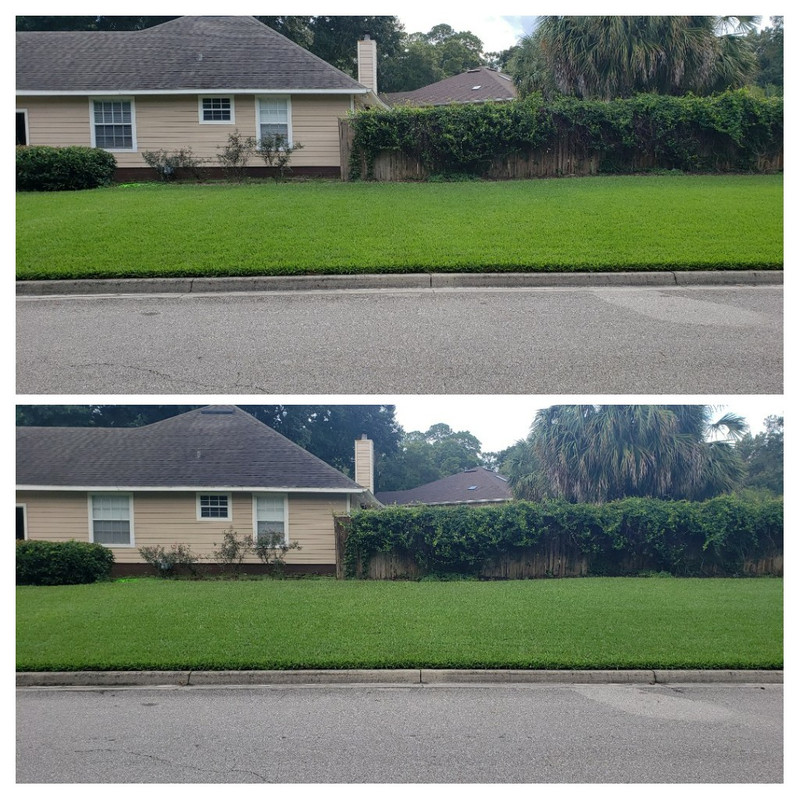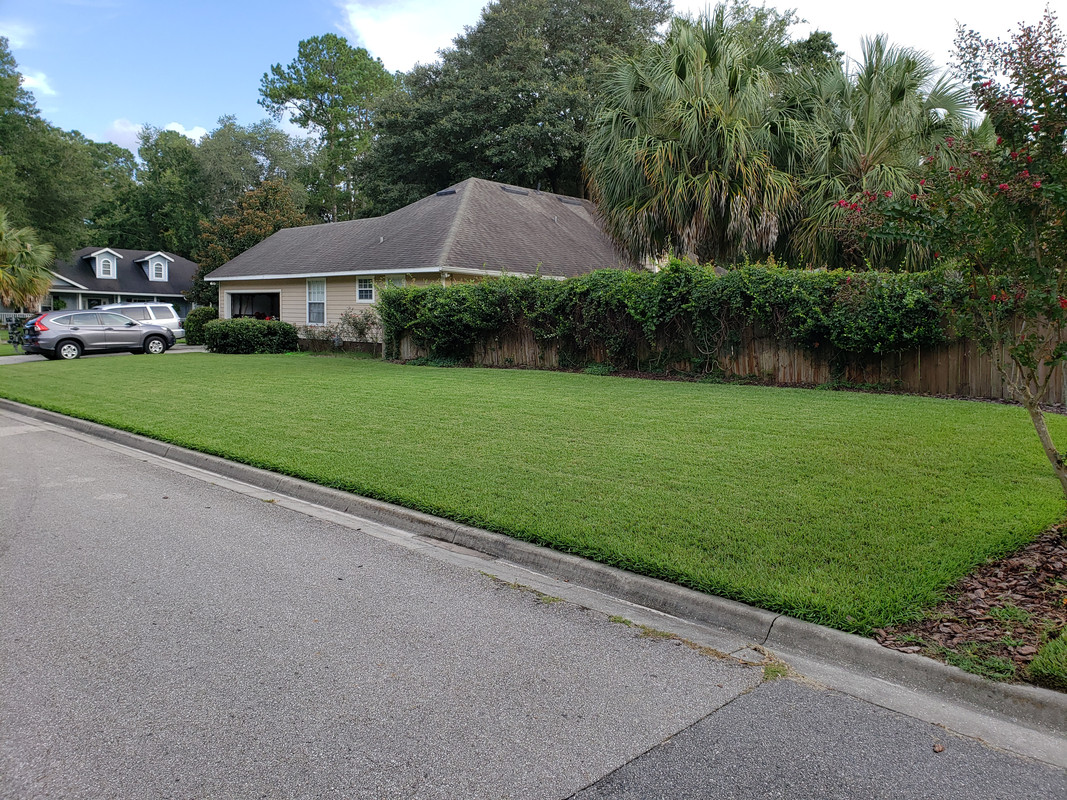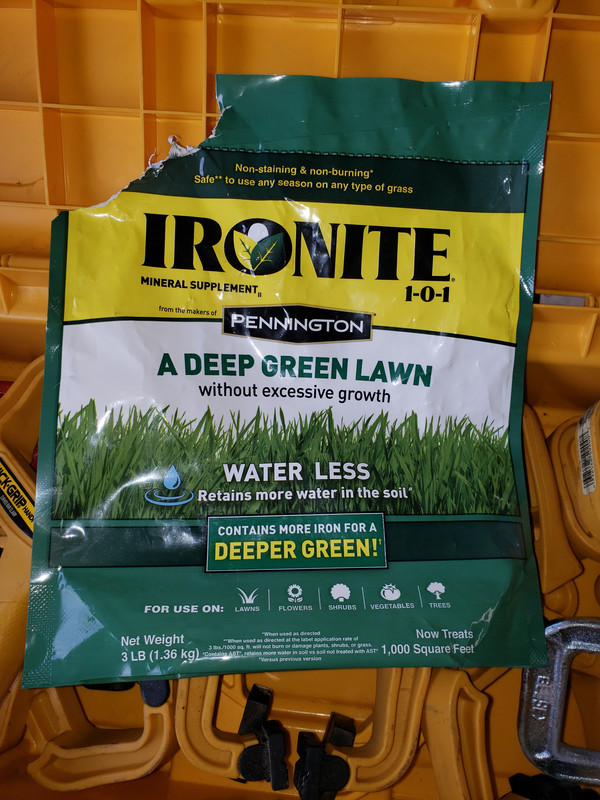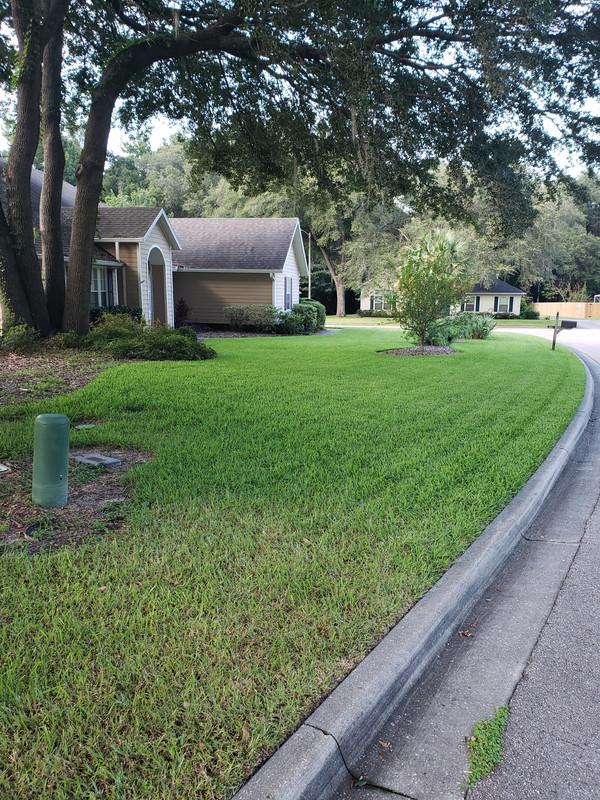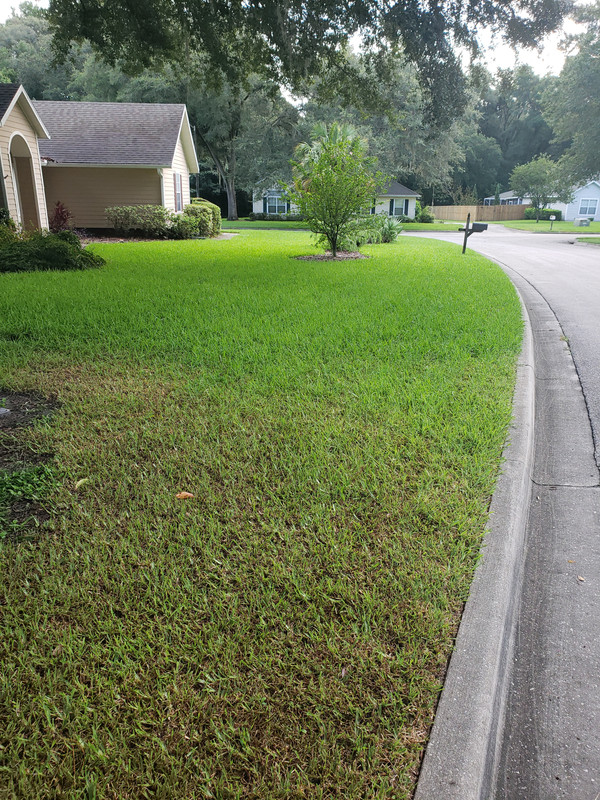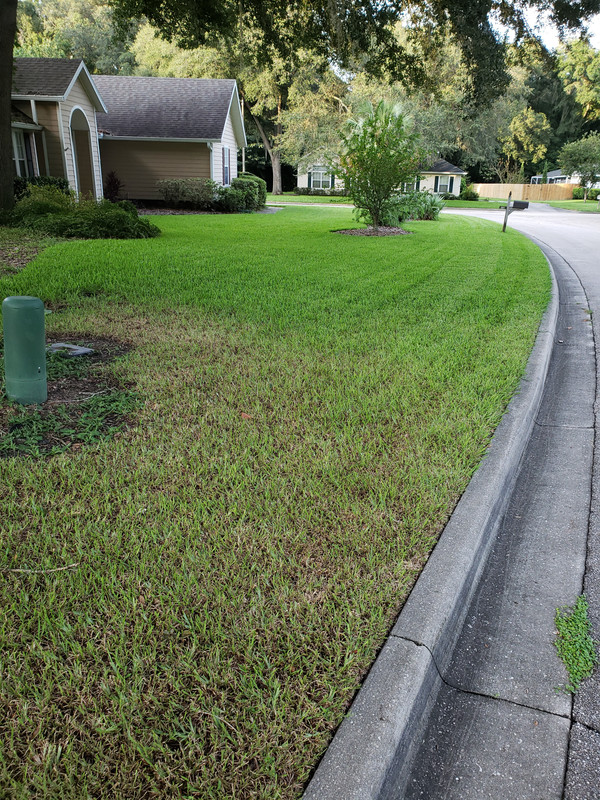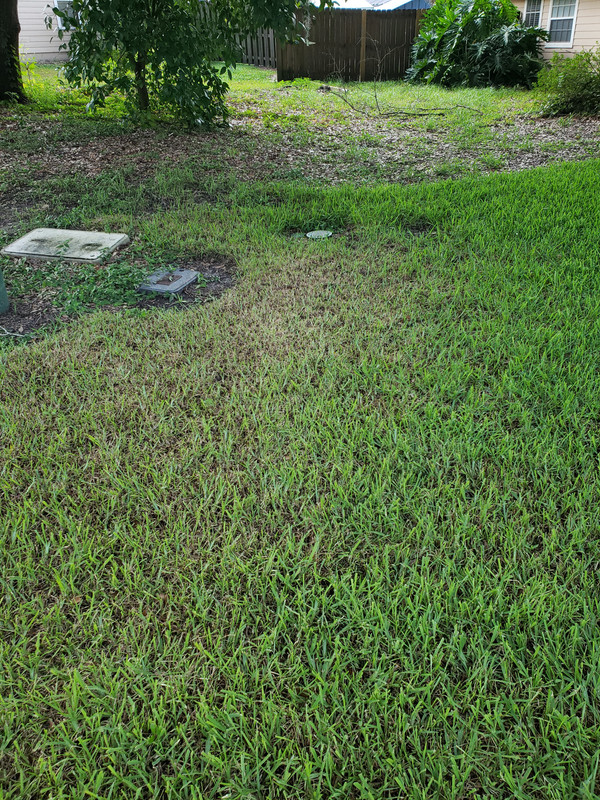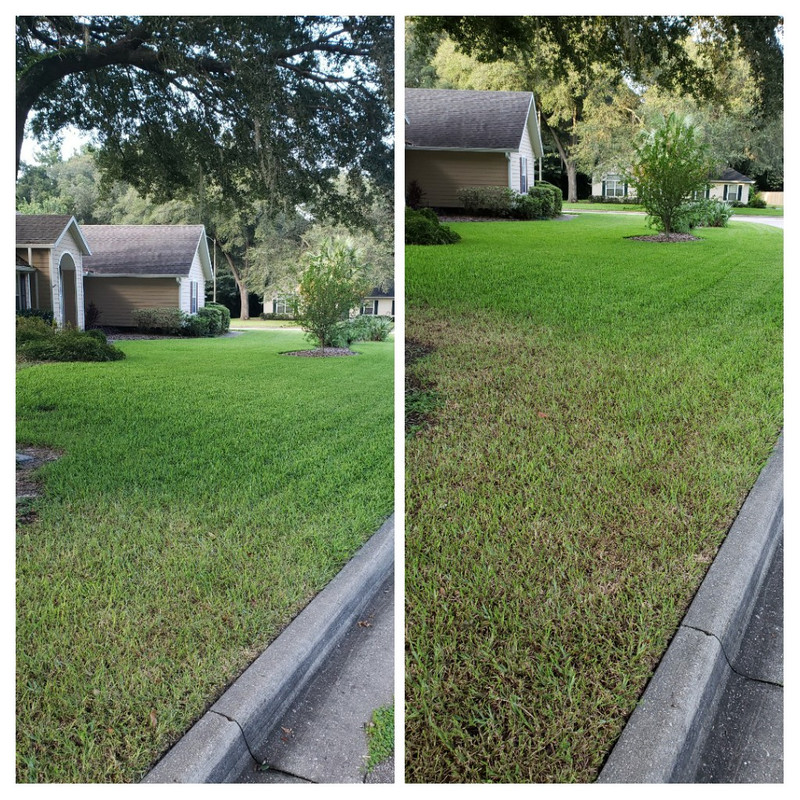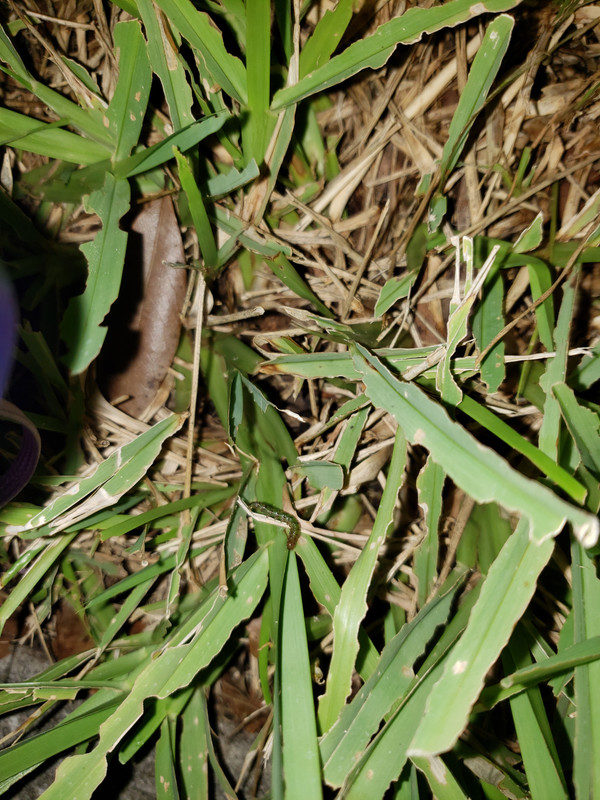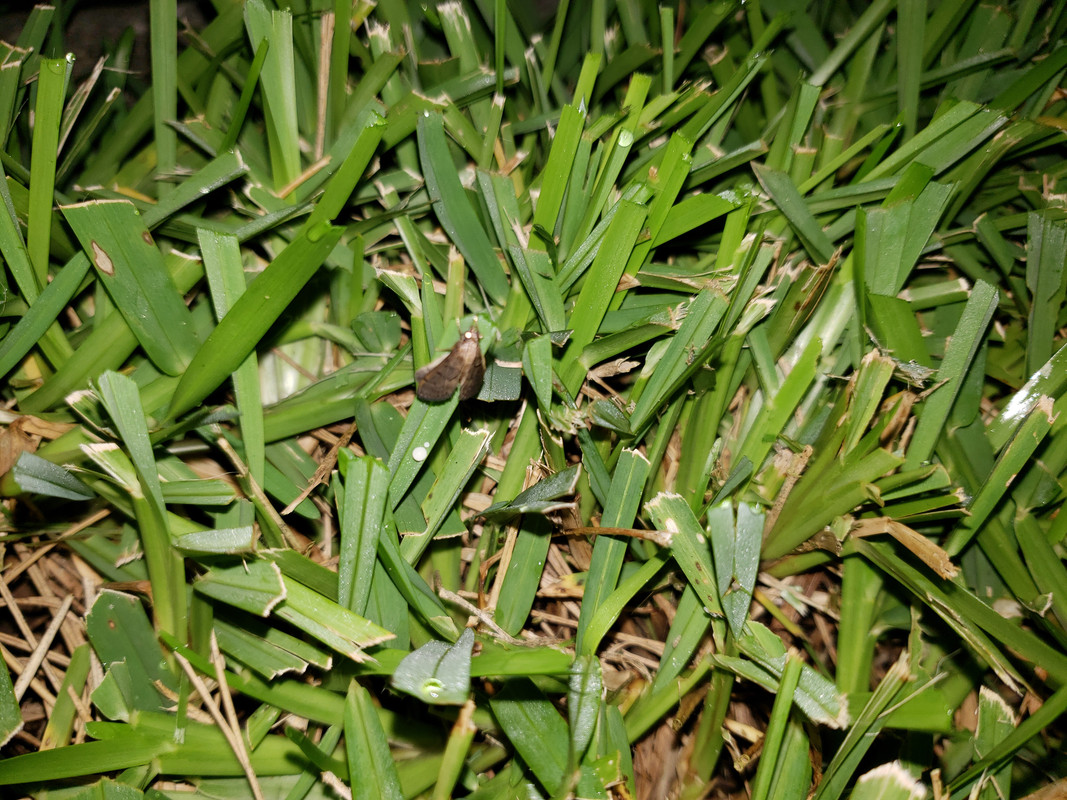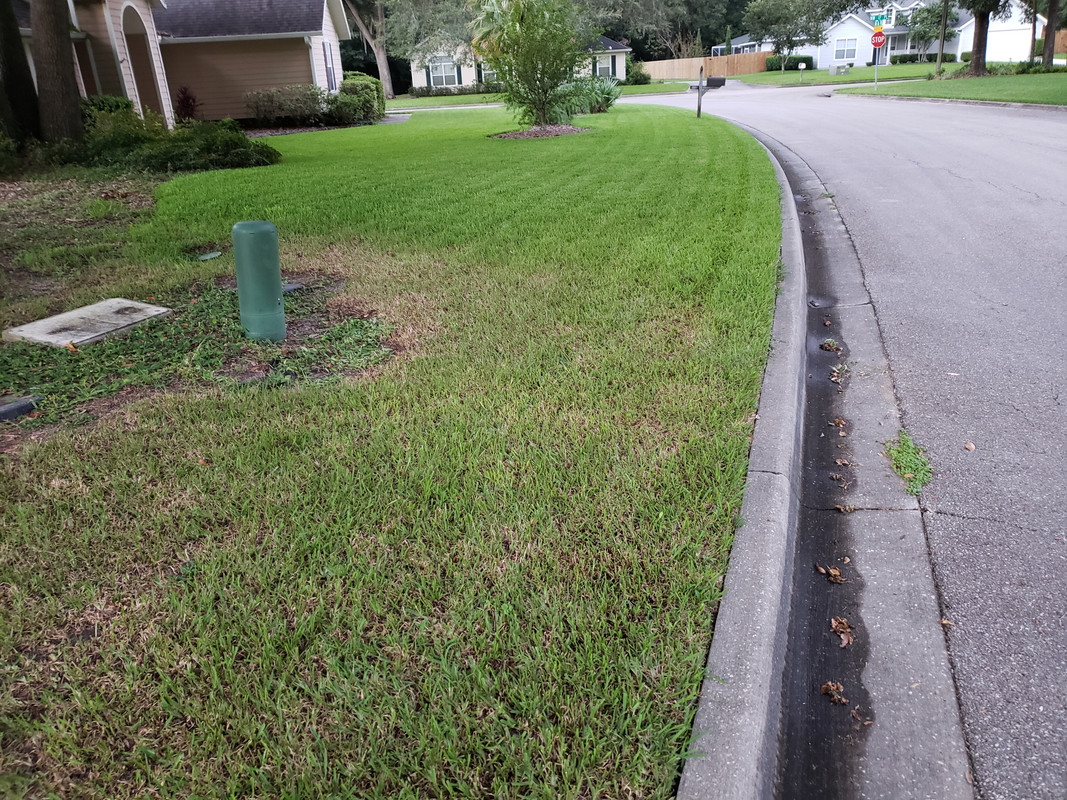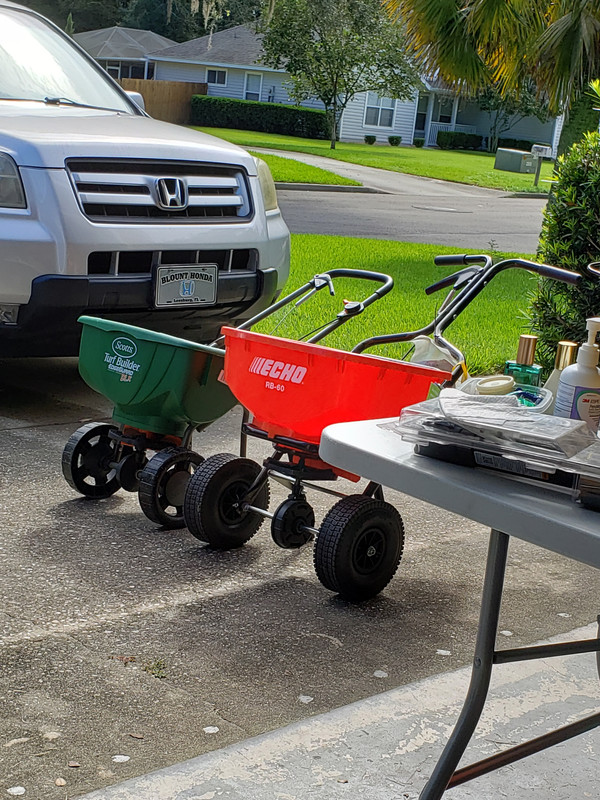Despite checking the weather/radar shortly before spraying Image for Weeds Southern Lawn Weed Killer (2,4-d, dicamba, sulfentrazone) and RoundUp Plus (contains diquat dibromide) in separate areas, it started raining ~30 minutes after I finished. What a disappointment. Caught me mid-mow.
The Ortho Nutsedge killer I sprayed 2 weeks ago got mixed results. For one thing, it's supposed to take 4 weeks so I'm really not being fair. But, it's labeled for smaller, younger plants and I sprayed some pretty mature plants. So I'm not disappointed in the product itself. The pre-mix was really convenient to use, if not exactly economical. Sometimes you just want something quick and easy. After visiting the hardware store, I decided to buy some smaller spray tanks. Picked up two 48oz sprayers to try out. They worked okay, but when the fluid gets low, you have to hold them level which is a bit of a nuisance.
The amount of chamberbitter growing on my property caught me off-guard. I've got a lot to cope with. I didn't use a late-summer pre-emergent. Guess I'll have to figure that out for next year.
